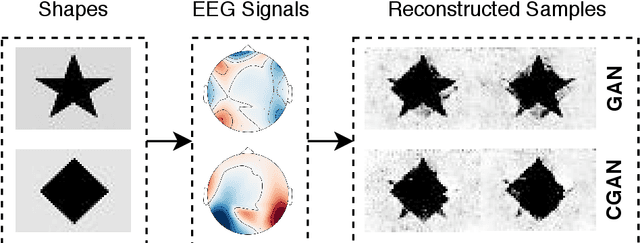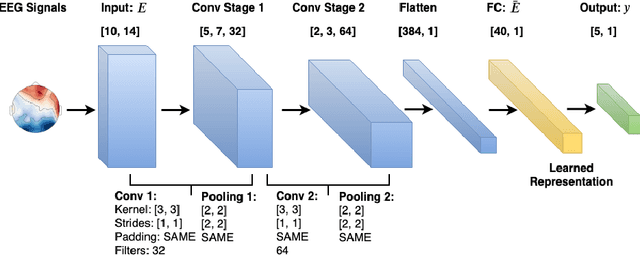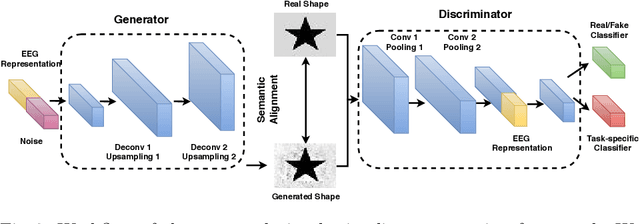Multi-task Generative Adversarial Learning on Geometrical Shape Reconstruction from EEG Brain Signals
Paper and Code
Jul 31, 2019



Synthesizing geometrical shapes from human brain activities is an interesting and meaningful but very challenging topic. Recently, the advancements of deep generative models like Generative Adversarial Networks (GANs) have supported the object generation from neurological signals. However, the Electroencephalograph (EEG)-based shape generation still suffer from the low realism problem. In particular, the generated geometrical shapes lack clear edges and fail to contain necessary details. In light of this, we propose a novel multi-task generative adversarial network to convert the individual's EEG signals evoked by geometrical shapes to the original geometry. First, we adopt a Convolutional Neural Network (CNN) to learn highly informative latent representation for the raw EEG signals, which is vital for the subsequent shape reconstruction. Next, we build the discriminator based on multi-task learning to distinguish and classify fake samples simultaneously, where the mutual promotion between different tasks improves the quality of the recovered shapes. Then, we propose a semantic alignment constraint in order to force the synthesized samples to approach the real ones in pixel-level, thus producing more compelling shapes. The proposed approach is evaluated over a local dataset and the results show that our model outperforms the competitive state-of-the-art baselines.
 Add to Chrome
Add to Chrome Add to Firefox
Add to Firefox Add to Edge
Add to Edge